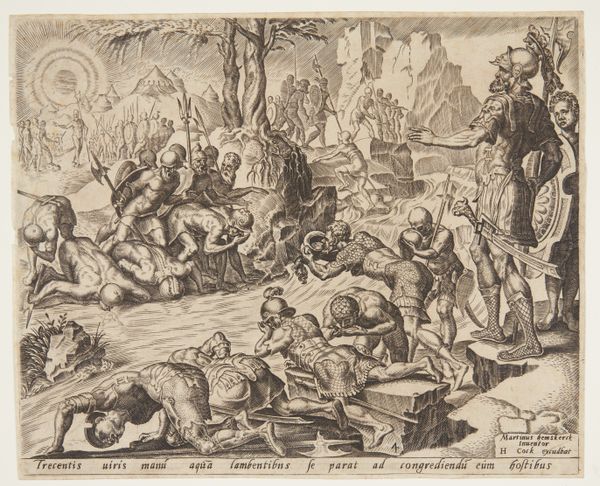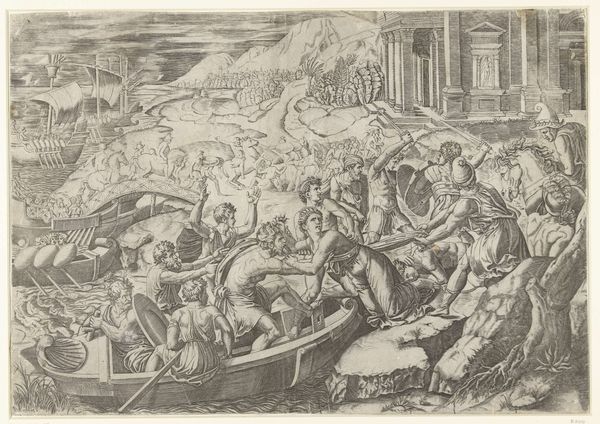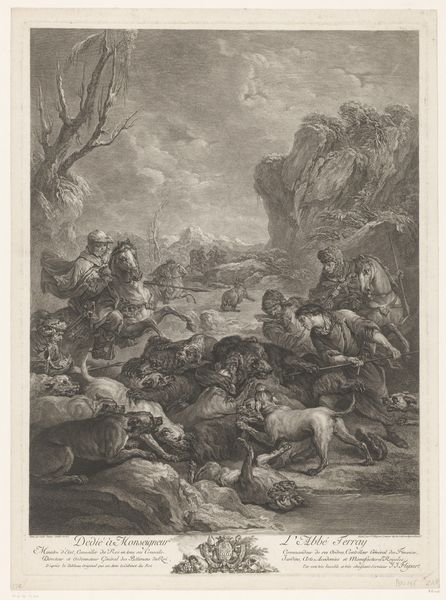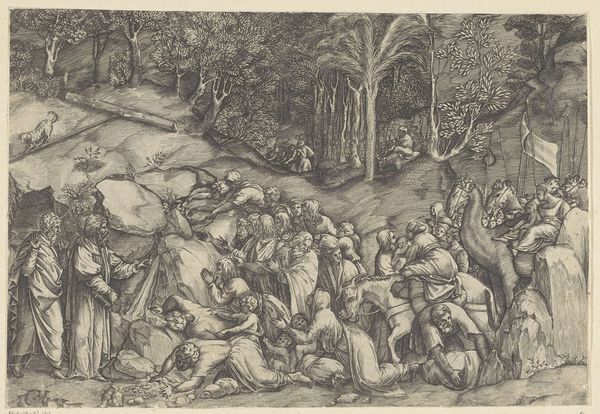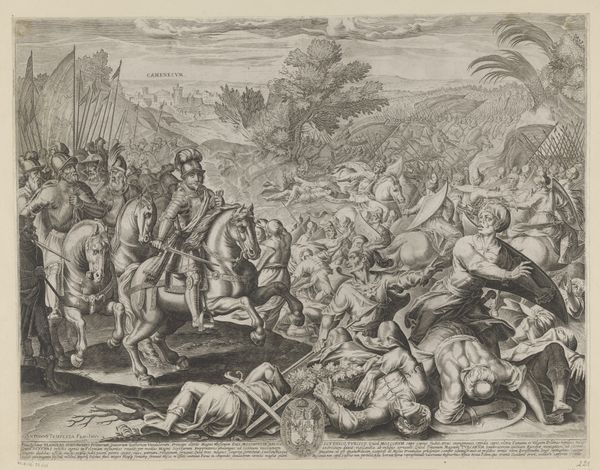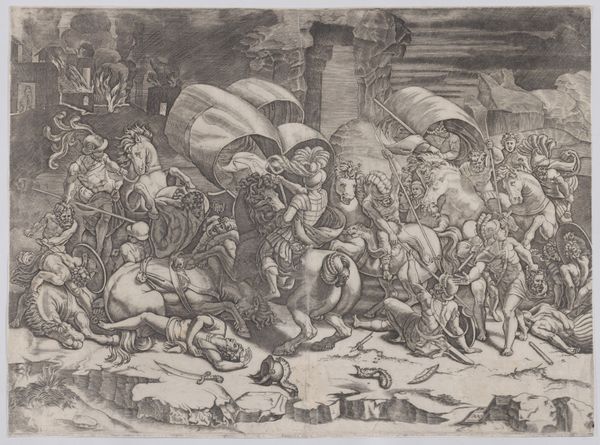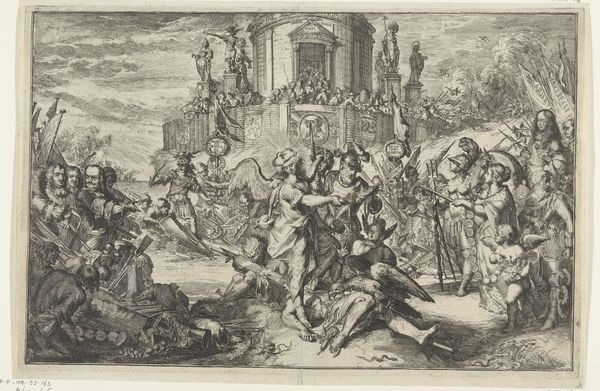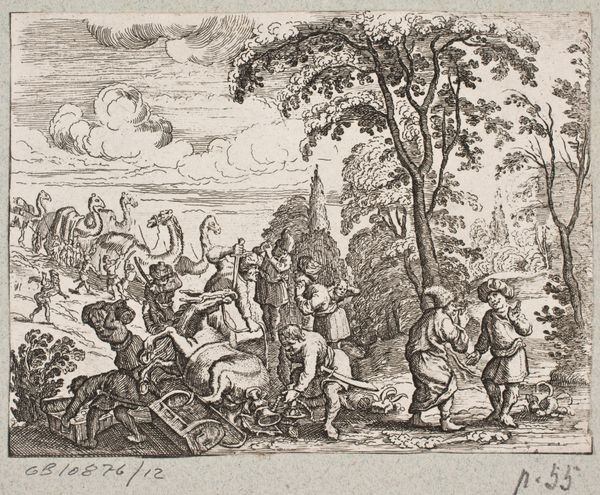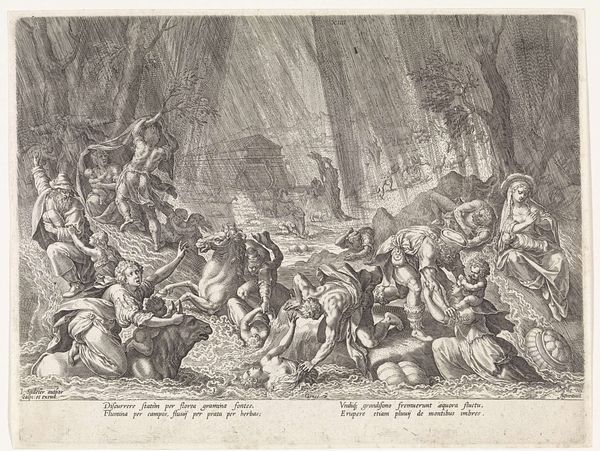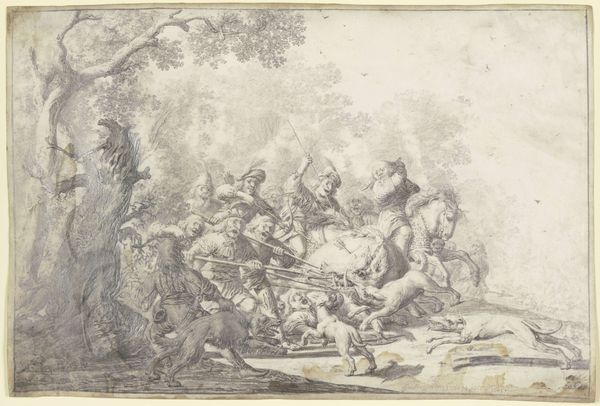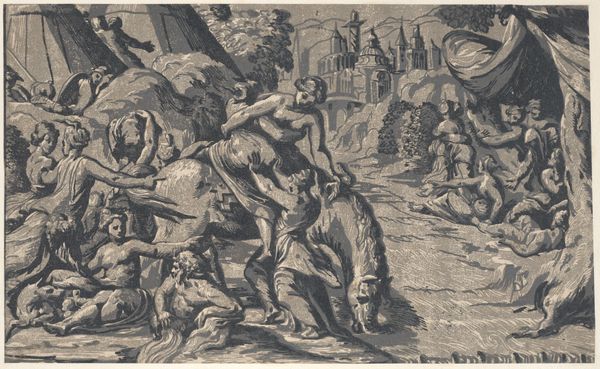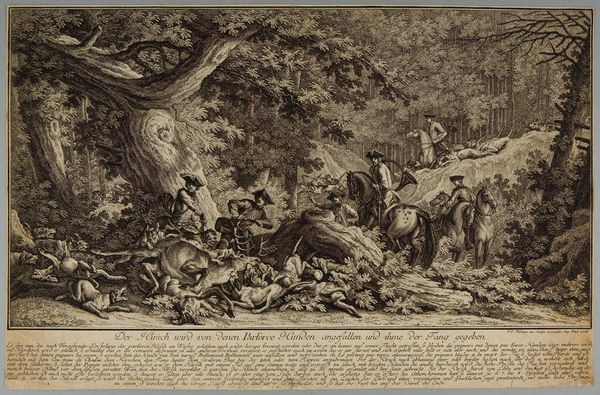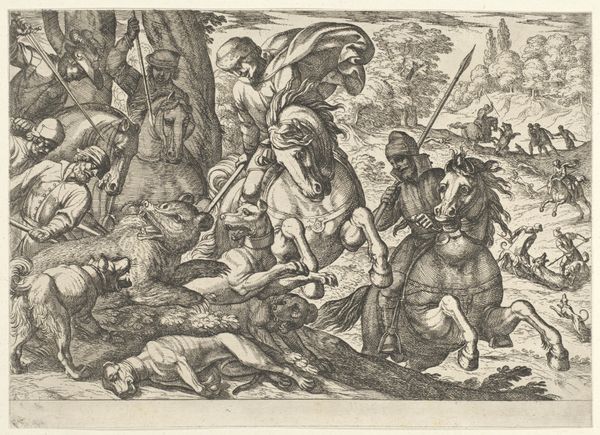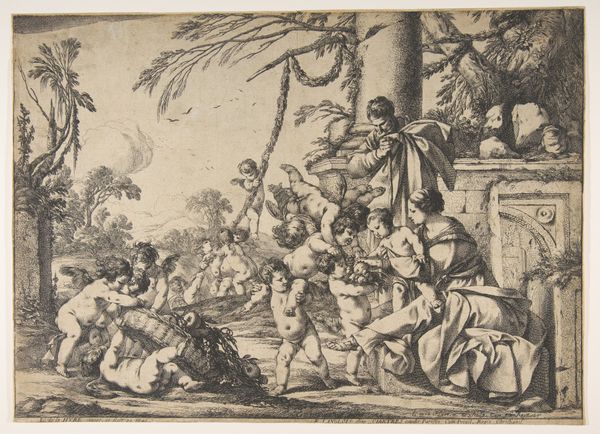
print, engraving
#
allegory
#
baroque
# print
#
landscape
#
figuration
#
line
#
history-painting
#
engraving
Dimensions: height 273 mm, width 374 mm
Copyright: Rijks Museum: Open Domain
Editor: This engraving, "De Dood vecht tegen de mensheid" or "Death fighting Mankind" by Boëtius Adamsz. Bolswert, dating to 1610, depicts a chaotic scene. The dense linework creates a palpable sense of dread. What can you tell me about the making and meaning behind this piece? Curator: From a materialist perspective, consider the engraving process itself. The labor, the tools, the printing press—all elements contributing to the mass dissemination of this allegorical message. How does the choice of engraving, a medium readily reproducible, impact the artwork's social function, particularly considering the themes of death and conflict? Editor: I hadn't thought about the practical aspects of producing multiple copies of something so grim. Were these prints aimed at a particular social class or group? Curator: Potentially. Engravings, unlike unique paintings, became increasingly accessible, extending moral or political messages beyond the elite. Reflect on the landscape background, contrasted with the dense figuration—is that simply aesthetic? Or does it tell us something about the relationship between human activity and the environment, particularly how that might tie into warfare and resource consumption? Editor: I see what you mean. The background almost feels indifferent to the carnage. It makes me wonder if this landscape speaks to something about the raw materials being fought over. Is death maybe winning because of a reliance on those finite things? Curator: Interesting question. And how does that notion of earthly limitations relate to the almost industrial, even mechanical, aspect of the weaponry being deployed here? It raises interesting questions about the links between technology, war, and natural resources. Editor: That’s given me a whole new way to interpret this work, and think about the relationship between art and industry in the 17th century! Curator: Precisely! Considering these tangible connections provides a compelling framework for interpreting works such as these.
Comments
No comments
Be the first to comment and join the conversation on the ultimate creative platform.
